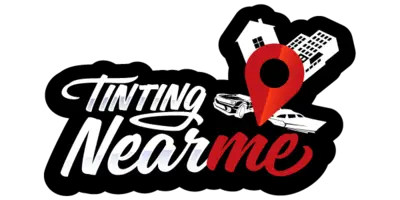2024 Wisconsin Legal Tint Laws Explained
You might think that tinting your car’s windows is a simple matter of personal preference, but it’s actually governed by specific laws in Wisconsin. As we head into 2024, it’s important to understand these regulations to avoid unnecessary fines or penalties. Wisconsin’s laws focus on factors like how much light your tint allows in, known as Visible Light Transmission, and where you’re allowed to have tint on your vehicle. But how do you determine the correct levels and what happens if you’re found in violation? Let’s explore this together to ensure you’re not only enhancing your vehicle’s appearance but also staying within the law’s boundaries.
The information on myeyerx.net isn’t legal advice; consider it a starting point. Always verify with local and state authorities, as the final decision rests with you. We are not lawyers. For specific legal guidance, we can refer you to legal experts. Remember, knowledge of both state and local laws is essential, and even law enforcement might not be fully updated. We aim for accuracy but advise double-checking for the latest regulations.
Key Takeaways
Key Takeaways
Key Takeaways
- In Wisconsin, window tint regulations specify the allowable levels of tint on different windows of a vehicle.
- The windshield tint must be non-reflective and can only be applied above the AS-1 line.
- Front windows must allow more than 50% of light to pass through, while rear windows can be darker but still need to allow more than 35% of light in.
- Wisconsin allows a variance of up to 3% for Visible Light Transmission (VLT), and there may be exemptions for individuals with specific medical conditions.
Need Help Getting a Medical Exemption?
Our Doctors Are Here For You!
MyEyeRx was established with the objective of simplifying the complex landscape of state regulations pertaining to legal tint medical exemptions for window tinting. For individuals seeking to navigate these regulations without resorting to a do-it-yourself approach, we offer a streamlined solution. Our team includes qualified medical professionals who are available to conduct consultations via Zoom. These sessions are designed to assess your eligibility for a medical exemption, ensuring a personalized and efficient process for acquiring the necessary documentation.
Understanding Wisconsin Tint Regulations
If you’re planning to tint your vehicle’s windows in Wisconsin, it’s crucial to understand the state’s regulations to avoid penalties, such as a violation ticket up to $175. Wisconsin tint laws specify that for sedans, SUVs, and vans, non-reflective tint is allowed above the AS-1 line on the windshield. If the AS-1 line is not found, a five-inch strip at the top of the windshield is permissible.
For the front side windows, the Wisconsin window tint laws dictate that these must allow more than 50% of light in. This rule is essential to ensure visibility for the driver and safety for both occupants and other road users. Similarly, rear side windows and the rear windshield must allow more than 35% of light in. This law is established to maintain a balance between privacy and safety.
A variance of up to 3% is allowed for Visible Light Transmission (VLT). However, if your car window tint is darker than 60% VLT on the rear window, you must have working side view mirrors. This is to ensure that you have adequate visibility of the road and other vehicles, despite the darker tint.
Law enforcement in Wisconsin state can test window tint VLT using handheld devices during traffic stops. This means that even if you think your window tint in Wisconsin is within the legal limits, it can easily be checked on the spot. So, it’s best to adhere strictly to the Wisconsin window tint laws to avoid any potential issues with law enforcement.
Legal Tint Limits in Wisconsin
Understanding Wisconsin’s legal tint limits is crucial to ensure your vehicle’s compliance and avoid potential fines of up to $175 for violations. The Wisconsin laws are clear about the legal tint limits in Wisconsin, setting specific parameters for how dark your car windows can be.
In the 2024 Wisconsin legal tint laws explained, here are the four essential points you need to remember:
- For your windshield, the tint must be non-reflective and only allowed above the manufacturer’s AS-1 line. This ensures your front view isn’t obstructed.
- Your front windows must allow more than 50% of light in. This regulation is essential to ensure visibility for the driver and other road users.
- The rear windows, on the other hand, can be darker. They should allow more than 35% of light in, providing privacy while still maintaining a certain level of visibility.
- Keep in mind that a variance of up to 3% is allowed for Visible Light Transmission (VLT). This means that if your tint is slightly darker than the specified limit, you may still be within the legal boundaries.
Bear in mind that window tinting laws are different for those with specific medical conditions. With proper documentation, you can be exempted from these regulations.
Window Tinting Penalties
Often, drivers in Wisconsin face hefty penalties for tint violations, including tickets that can cost up to $175. This is because the law in Wisconsin is quite strict when it comes to window tinting, and failing to follow these laws can result in serious consequences.
Under Wisconsin law, police officers can issue multiple tickets for tint violations, which means that the costs can quickly add up if you’re not careful. It’s also important to note that Wisconsin doesn’t offer fix-it tickets for tint violations. This means that once you’re ticketed for a tint violation, it’s not enough to merely fix the problem after the fact. You need to ensure that your windows adhere to legal tinting standards from the start.
One of the ways police officers in Wisconsin ensure compliance with window tint laws is by using handheld devices to test the Visible Light Transmission (VLT) during traffic stops. If your windows are tinted darker than 60% VLT on the rear window, you could be in violation of the law. To avoid this, it’s crucial that your vehicle has working side view mirrors, as required by Wisconsin law.
Determining Improper Tint Levels
As a driver in Wisconsin, it’s essential that you’re aware of the specific Visible Light Transmission (VLT) requirements for each window of your vehicle to avoid penalties and potential legal issues stemming from improper tint levels. The rules and regulations regarding window tint are strict, and for a good reason – they ensure the safety of everyone on the road.
- The visible light transmission or VLT is the percentage of light allowed to pass through your auto window tint. The higher the VLT, the more light can pass through. Wisconsin law has specific VLT percentages for different windows, so it’s crucial to know these before getting your car tint.
- Identifying legal tinting isn’t just about understanding VLT percentages. It also involves checking for a sticker to identify legal tinting, usually placed between the glass and the film on the driver’s side window.
- The front windshield can have non-reflective tint above the manufacturer’s AS-1 line. The side windows and rear windshield must allow more than 50% light inside the car.
- If unsure about your tint levels, consider getting a professional opinion. Law enforcement officers use tint meters to measure VLT, so they’ll be able to tell if your tint is within legal limits.
Your responsibility doesn’t end after getting the right car tint. Regular checks are important to ensure your tint remains within legal limits. Remember, adhering to Wisconsin’s tint laws is not only about avoiding penalties but also about ensuring your safety and the safety of others on the road.
Additional Wisconsin Tinting Rules
Diving deeper into the realm of Wisconsin’s tinting laws, it’s worth noting that a variance of up to 3% is permitted for VLT. This means, under the laws in Wisconsin, your tint can be slightly darker or lighter than the legal limit.
In addition to this variance, there are other additional Wisconsin tinting rules that you should be aware of. For instance, if your vehicle’s rear window tint is darker than 60% VLT, your side view mirrors must be in good working order. This is a critical rule because it helps ensure visibility and safety on the road.
Another thing to keep in mind is the color of your tint. While there’s no specific prohibition on tint colors in Wisconsin, reflective tints are effectively prohibited. If your tint is too reflective, it could be considered an illegal tint, and you might find yourself stopped by the police.
And what about certification or stickers for window film? In Wisconsin, there’s nothing like that required. However, if you have a tint exemption in Wisconsin that allows for darker tint, you’ll need to have the proper documentation on hand.
If you would like to bypass having to fill out paperwork and dealing with the state, we can help you get an online medical exemption for window tint in Wisconsin.
Understanding the 2024 Wisconsin legal tint laws explained here will help you stay within the law and avoid unnecessary interactions with law enforcement. If you’re unsure about any aspect of these tinting rules, consider consulting with a law firm experienced in vehicle regulations. They can guide you through the complexities of the laws that govern vehicles in Wisconsin, helping you make informed decisions about your vehicle’s tint.

Don't want the hassle? Let us take care of your exemption for you!
MyEyeRx.net is here to help you streamlines the process of obtaining a medical exemption for window tint online. Explore our services to easily transform your window tint from non-compliant to legally approved!
Because of the differences in each of the 50 states, we’ve crafted distinct guides for securing window tint medical exemptions for each of the individual states.

Toriano (Tory) Dewberry
Become one of the many satisfied clients Toriano has assisted in obtaining a medical exemption without stepping out of their homes. Click the button below to begin and discover if you're eligible for a medical exemption.

Toriano (Tory) Dewberry
Become one of the many satisfied clients Toriano has assisted in obtaining a medical exemption without stepping out of their homes. Click the button below to begin and discover if you're eligible for a medical exemption.
Frequently Asked Questions (FAQ'S)
What Is the Darkest Legal Tint in Wisconsin?
In Wisconsin, you’re allowed to have the darkest tint above the AS-1 line on your windshield. Your front side windows must let in more than 50% light. It’s crucial to understand these laws to avoid visibility issues and law enforcement encounters, and to ensure your tint’s durability and proper installation. Remember, tint can offer health benefits, energy savings, UV protection, and interior preservation, but safety should always be your primary concern.
What Is the Darkest Legal Tint?
You’re asking about the darkest legal tint. This can vary by location and vehicle type. Tint regulations dictate this to ensure safety. Dark tints offer benefits like heat reduction and privacy. However, too dark can obstruct vision, hence regulations. Tint installation is done using various tinting materials, each with different varieties, durability, and maintenance needs. If it’s too dark, the tinting process may need to be reversed with tint removal.
What Percentage Is Darkest Legal Tint?
In Wisconsin, you’re allowed a tint that permits over 50% light in your front side windows. It’s the darkest legal tint you can have. This tint offers benefits like UV protection and privacy, but you’ve to consider visibility issues and safety concerns. Variations in tint installation can lead to legal consequences. Always remember, law enforcement and tint maintenance are key aspects to keep in mind when opting for such tints.
What Is the Statute 305.32 in Wisconsin?
Statute 305.32 in Wisconsin governs window tinting laws. You should interpret it carefully to avoid legal penalties. It outlines tint exceptions, enforcement by law officials, and potential traffic violations. It also discusses tinting benefits, legal definitions, and safety measures. Always ensure your tint installation is compliant. Misunderstanding this statute can lead to legal issues. It’s not just about aesthetics, it’s also about safety and legality.

MyeyeRx.net
Ensuring your tint is not just about style, but legality and safety.
Let us guide you through the maze of state regulations to legal clarity.

Conclusion
So, stay on the sunny side of the law in Wisconsin. Picture your car as a pair of sunglasses – it may look cool, but if it’s too dark, it’s not legal. Remember, front side windows need over 50% light in, and rear ones over 35%. Breaking these rules can leave you facing fines. Keep your ride both stylish and lawful by adhering to the 2024 Wisconsin tint laws. After all, nobody wants their day darkened by penalties.
Looking to find a Reputable Window Tint Company In Wisconsin?
Checkout Tintingnearme.com to Find A Local Tint Shop
After learning about window tint laws, the next step is to find a trusted local window tinting shop. Tinting Near Me offers a selection of reputable shops knowledgeable in both quality tinting and legal standards, including medical exemptions.
Choose a shop from their list for expert service that meets legal requirements and enhances your vehicle’s compliance and protection.


